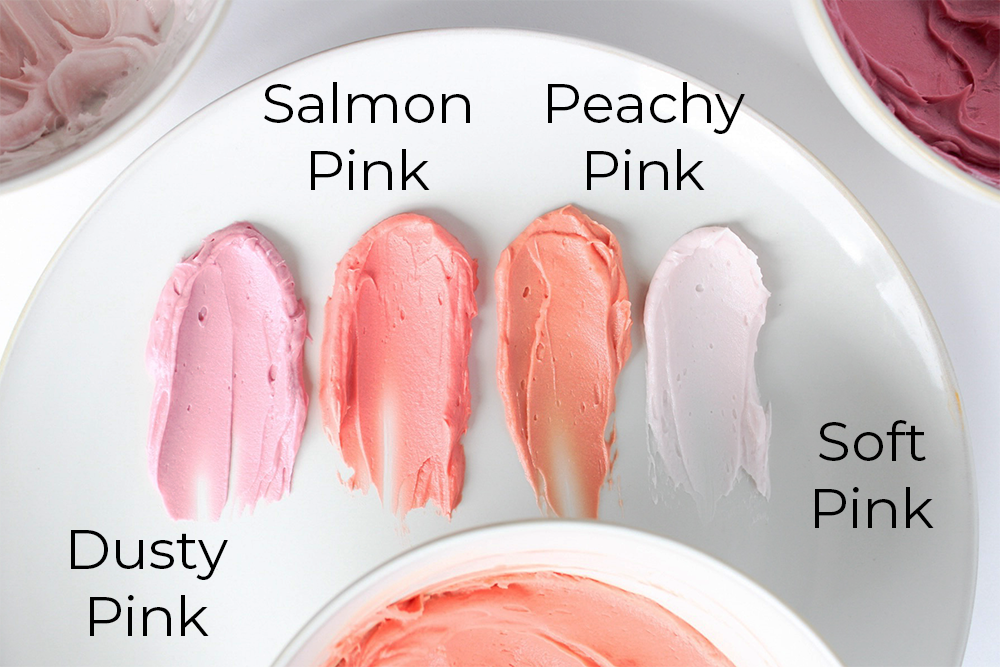BUTTERCREAM COLOR PALETTE – NATURAL PINK SHADES

If you’re dreaming in pink, you’re not alone! Pink buttercream is timeless, versatile, and always in style—whether you’re going for romantic, playful, or sophisticated vibes. Using Chefmaster Natural Food Coloring, we’ve created four stunning shades of pink buttercream that are perfect for cakes, cupcakes, cookies, or any sweet creation.
Here’s a closer look at the four shades we mixed and how you can achieve each one using natural color blends.
Start with the Right Buttercream Base
Natural food coloring is sensitive to the PH level of certain ingredients. For best results, we are recommending using our American Buttercream Recipe as a base when decorating with natural food dyes.
Prep your buttercream by whipping your butter to a bright white and using clear vanilla if you want neon or bright colors, normal vanilla is great for a slightly muted or darker hues.
Making the Pink Shades
1. Natural Soft Pink
Soft, subtle, and perfect for a light, elegant finish.
- 1 Part Natural Pink
2. Natural Peachy Pink
A lively, summery pink with warm orange undertones. This is the go-to shade for fun and vibrant cakes or elegant minimalist designs.
- 2 Parts Natural Pink
- 1 Part Natural Sunset Orange
3. Natural Salmon Pink
Romantic, summery, and gorgeous tone with pink and red undertones. Salmon pink works especially well with gold accents or rustic buttercream textures.
- 2 Parts Natural Pink
- 1 Part Natural Red
4. Natural Dusty Pink
Moody and muted with vintage charm. Dusty pink looks stunning when paired with deep burgundy, sage green, or antique gold.
- 3 Parts Natural Pink
- ½ Part Natural Purple
- ½ Part Natural Black
Tips for Success
- Start small – Natural colors are more muted than synthetic ones, so it’s best to add coloring in very small increments. A little goes a long way!
- Let it rest – Always allow your buttercream to sit for 10–15 minutes after adding color. Natural dyes can deepen over time, and this helps you avoid over-coloring. You can make a few days in advance or for a minimum of 12-24 hours to allow the color to develop fully.
- Use white or off-white buttercream as your base – Yellow-toned buttercream (like from butter-heavy recipes) can affect your final shade. Whip your butter until it is fluffy white and use clear vanilla.
Working with Chefmaster Natural Food Coloring means you get gorgeous hues without artificial dyes. Each of these pink tones brings its own personality and charm, allowing you to create depth and dimension with just a few drops.
DOWNLOAD PDF

